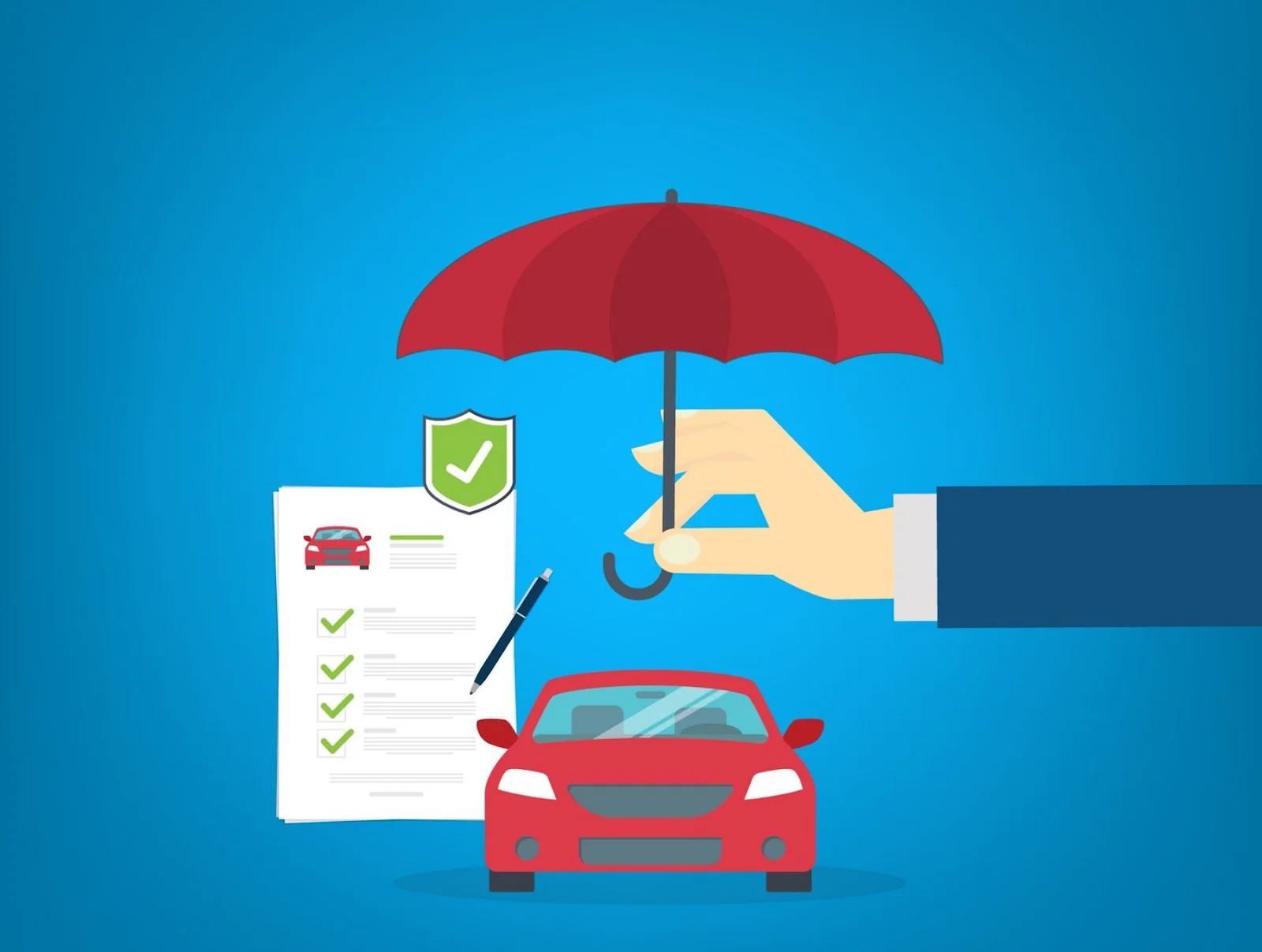The concept of prepaid services has revolutionized everything from cell phone plans to streaming subscriptions, giving consumers more control over their expenses and eliminating unexpected bills. Prepaid car insurance brings this same philosophy to auto coverage, offering drivers a way to pay for their protection upfront while gaining greater control over their insurance costs and coverage periods. This approach represents a fundamental shift from traditional insurance billing models that can create financial stress through rigid payment schedules and surprise rate increases.
Traditional car insurance operates on a postpaid model where you receive coverage first and then pay for it through monthly, quarterly, or semi-annual billing cycles. While this approach works for many drivers, it creates several challenges that prepaid alternatives can address more effectively. Postpaid insurance requires you to trust that your rates won’t increase dramatically at renewal, commits you to payment schedules that might not align with your income, and can result in policy cancellations if you experience temporary financial difficulties that prevent timely payment.
Prepaid car insurance flips this equation by allowing you to pay for coverage in advance, giving you complete certainty about your insurance costs while eliminating the risk of surprise bills or payment-related policy cancellations. This approach provides budgeting predictability that can be particularly valuable for drivers with irregular income, seasonal employment, or tight household budgets that require careful financial planning.
The prepaid model also addresses one of the most frustrating aspects of traditional insurance: the disconnect between when you pay and when you’re actually covered. With traditional insurance, you might pay your premium in January for coverage that extends through June, but if you cancel in March, getting a refund for unused coverage can be complicated and slow. Prepaid insurance provides clearer alignment between what you pay and what you receive, making it easier to adjust your coverage when your needs change.
Understanding prepaid car insurance requires recognizing that it’s not necessarily about paying less for coverage, but rather about gaining more control over how and when you pay while eliminating some of the uncertainty and complexity that traditional insurance billing creates. For many drivers, this increased control and predictability provide value that extends beyond simple cost considerations.
Table of Contents
ToggleHow Prepaid Car Insurance Works in Practice
Prepaid car insurance operates through several different models, each designed to address specific aspects of traditional insurance that create problems for certain types of drivers. The most straightforward approach involves paying for a specific coverage period upfront, such as purchasing six months of coverage with a single payment. This eliminates monthly bills while providing complete cost certainty for the coverage period.
More sophisticated prepaid models allow you to purchase coverage in smaller increments, such as weekly or monthly blocks, while still maintaining the prepaid structure. This approach provides the budget control benefits of prepaid coverage while offering flexibility for drivers who don’t want to commit to long coverage periods or large upfront payments. These programs often use technology platforms that make it easy to purchase additional coverage blocks as needed.
Usage-based prepaid insurance takes the concept further by allowing you to purchase coverage based on actual driving activity rather than time periods. Under this model, you might purchase a certain number of miles of coverage or pay for protection during specific periods when you’ll be driving. This approach can provide significant savings for drivers who don’t use their vehicles regularly or have predictable driving patterns.
The technology infrastructure behind prepaid car insurance is crucial for making these models practical and user-friendly. Mobile applications typically provide the primary interface for purchasing coverage blocks, monitoring your coverage status, and adding additional protection when needed. These platforms need to handle real-time coverage activation, payment processing, and integration with state insurance verification systems to ensure that your coverage is recognized by law enforcement and other parties.
Automatic renewal features in many prepaid programs address one of the potential drawbacks of prepaid coverage by ensuring that you don’t accidentally allow your coverage to lapse when a prepaid period expires. These systems can automatically purchase additional coverage using stored payment information, send alerts when coverage is about to expire, or allow you to set up automatic coverage extensions that maintain continuous protection.
Customer service integration becomes particularly important with prepaid insurance because drivers may need immediate assistance with coverage purchases, status verification, or claims processing. Quality prepaid programs provide multiple ways to access customer support while maintaining the self-service capabilities that make prepaid coverage convenient and efficient.
Benefits and Advantages of Prepaid Coverage Models
The primary advantage of prepaid car insurance lies in the budgeting control and financial predictability it provides. When you pay for coverage upfront, you know exactly what your insurance will cost for the coverage period, eliminating the uncertainty of rate increases, billing errors, or payment processing problems that can affect traditional insurance. This predictability can be particularly valuable for households managing tight budgets or drivers with irregular income who need to plan their expenses carefully.

Cash flow management benefits make prepaid insurance attractive for drivers who prefer to handle major expenses when they have available funds rather than being locked into monthly payment schedules that might not align with their income patterns. A driver who receives a large commission check or seasonal bonus can purchase several months of coverage at once, eliminating insurance payments during leaner periods.
The elimination of payment-related policy cancellations represents another significant advantage of prepaid coverage. Traditional insurance can be cancelled for late payments even if you’re just a few days behind, creating legal risks and potential gaps in coverage that can lead to higher rates in the future. With prepaid coverage, you’ve already paid for the protection, so temporary financial difficulties can’t result in sudden policy cancellations.
Credit and payment history benefits can accrue from prepaid insurance programs that report payment information to credit bureaus. Making large prepaid payments demonstrates financial responsibility and can help improve credit scores over time. Some programs also offer credit-building features specifically designed to help drivers establish or rebuild their credit profiles through insurance payments.
Simplicity and reduced administrative burden appeal to drivers who prefer straightforward financial relationships without monthly bills, payment due dates, or ongoing account management requirements. Once you’ve purchased prepaid coverage, you can focus on other priorities without worrying about insurance payments until the coverage period approaches expiration.
Flexibility in coverage timing allows prepaid insurance to accommodate unusual circumstances that traditional annual policies handle poorly. Drivers who need coverage for specific periods, such as seasonal vehicle use, temporary relocations, or short-term vehicle ownership, can purchase exactly the coverage they need without paying for unnecessary protection or dealing with policy cancellation complications.
Strategic Applications for Different Driver Situations
Prepaid car insurance provides particular value for specific types of drivers and situations where traditional insurance models create challenges or inefficiencies. Understanding these applications helps drivers determine whether prepaid coverage might provide advantages for their specific circumstances and needs.
Seasonal drivers who use vehicles only during certain periods of the year can use prepaid insurance to purchase coverage for active periods while avoiding payments during storage periods. This approach works particularly well for recreational vehicles, seasonal work vehicles, or classic cars that are driven only during favorable weather. Instead of maintaining year-round coverage or dealing with policy suspensions and reinstatements, seasonal drivers can purchase prepaid coverage blocks that align exactly with their usage patterns.
Gig workers and freelancers with irregular income often struggle with monthly insurance payments that don’t align with their variable earnings. Prepaid insurance allows these drivers to purchase coverage during high-earning periods while eliminating payment stress during slower times. A rideshare driver might purchase several months of coverage after a particularly busy week, ensuring continuous protection without worrying about upcoming payment due dates.
Temporary vehicle owners, such as people who purchase cars for short-term use or students who need coverage for limited periods, can use prepaid insurance to avoid the complications of traditional annual policies. Instead of purchasing coverage they won’t fully use or dealing with cancellation procedures and refund requests, temporary owners can purchase exactly the coverage period they need.
Budget-conscious families can use prepaid insurance as a budgeting tool, purchasing coverage when they have available funds and eliminating monthly insurance bills that compete with other household expenses. This approach can be particularly effective for families who receive large tax refunds, bonuses, or other periodic payments that can be allocated to major expenses like insurance.
Credit-challenged drivers who face higher rates or larger deposits with traditional insurance might find prepaid options more accessible. Some prepaid programs have more flexible qualification requirements or offer better rates for drivers who can demonstrate financial responsibility through upfront payments rather than ongoing payment histories.
International drivers or those with complex residency situations can use prepaid insurance to navigate insurance requirements that traditional companies handle poorly. Prepaid coverage can provide protection during transitions between countries, temporary relocations, or other situations where traditional annual policies create complications.
Technology Integration and User Experience
Modern prepaid car insurance relies heavily on sophisticated technology platforms that make purchasing, managing, and using prepaid coverage convenient and reliable. These systems need to handle real-time coverage activation, integrate with multiple payment methods, provide clear coverage status information, and ensure that coverage is properly documented for law enforcement and other verification needs.

Mobile applications typically serve as the primary interface for prepaid insurance, providing features like instant coverage purchases, real-time status monitoring, coverage extension options, and claims reporting capabilities. These apps need to be intuitive and responsive because drivers often need to purchase or verify coverage quickly in situations like vehicle purchases or traffic stops.
Payment processing integration must handle various payment methods securely while providing instant coverage activation. The best prepaid platforms accept credit cards, debit cards, bank transfers, and digital wallet payments while providing immediate confirmation and coverage documentation. Real-time payment processing ensures that coverage begins the moment payment is completed.
Coverage verification systems need to integrate with state DMV databases and other verification systems to ensure that prepaid coverage is properly recognized by law enforcement and other parties. Some states have specific requirements for how insurance information is reported and verified, making seamless integration crucial for avoiding complications.
Notification and alert systems help drivers manage their prepaid coverage by providing timely reminders about approaching expiration dates, opportunities to extend coverage, and important policy information. These systems need to be configurable to match individual preferences while ensuring that critical information reaches drivers when they need it. Customer support integration provides assistance when drivers need help with coverage purchases, claims processing, or technical issues. Quality prepaid platforms offer multiple support channels while maintaining the self-service capabilities that make prepaid coverage efficient and convenient.
Considerations and Potential Limitations
While prepaid car insurance offers significant advantages for many drivers, it’s important to understand potential limitations and considerations that might affect its suitability for your specific situation. Like any insurance model, prepaid coverage involves trade-offs that may not be optimal for all drivers or circumstances. Coverage flexibility can be more limited with prepaid insurance compared to traditional policies that allow ongoing adjustments to coverage levels, deductibles, and policy features. Once you’ve purchased a prepaid coverage block, making changes might be more complicated or expensive than with traditional policies that offer monthly adjustment opportunities.
Refund policies for unused coverage vary significantly among prepaid insurance providers and can be less favorable than traditional insurance cancellation procedures. If you need to cancel prepaid coverage early, you might not receive a full refund for unused coverage, potentially making prepaid options more expensive if your plans change unexpectedly. Coverage availability might be more limited with prepaid insurance programs, particularly for drivers who need specialized coverage or have complex insurance needs. The prepaid model works best for straightforward coverage situations, while drivers who need extensive customization might find traditional insurance more accommodating.
Long-term cost considerations should be evaluated carefully because prepaid insurance might not always be the least expensive option over extended periods. While prepaid coverage provides cost certainty and budgeting benefits, drivers who qualify for significant discounts or rate reductions with traditional insurance might pay more overall with prepaid programs. Market availability of prepaid car insurance varies by location and insurance company, with some areas having limited options or providers. Drivers interested in prepaid coverage should research available programs in their area while ensuring that providers are properly licensed and financially stable.
Companies like OCHO are exploring innovative approaches to prepaid and flexible payment insurance models, recognizing that different drivers have different financial needs and preferences. These companies are working to combine the benefits of prepaid coverage with comprehensive protection and exceptional customer service.Explore flexible car insurance payment options including prepaid models at https://www.ocho.co/car-insurance/no-deposit



